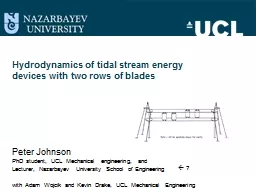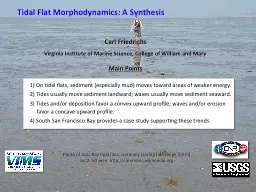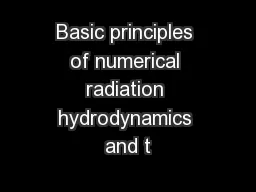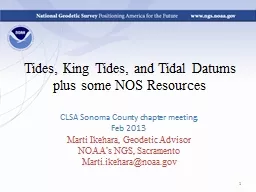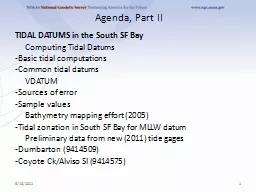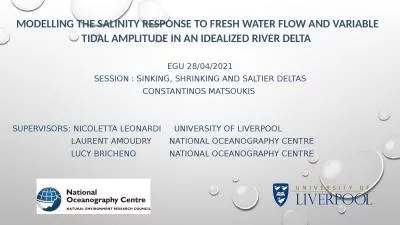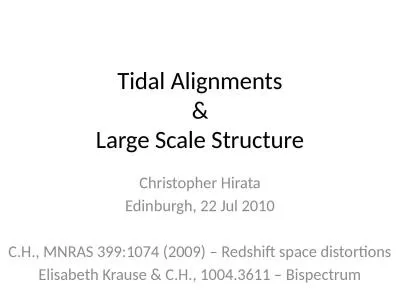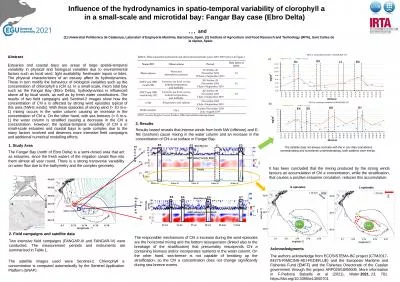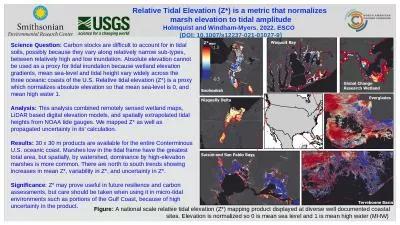PPT-Hydrodynamics of tidal stream energy
Author : jane-oiler | Published Date : 2016-02-21
devices with two rows of blades Peter Johnson PhD student UCL Mechanical engineering and Lecturer Nazarbayev University School of Engineering with Adam Wojcik
Presentation Embed Code
Download Presentation
Download Presentation The PPT/PDF document "Hydrodynamics of tidal stream energy" is the property of its rightful owner. Permission is granted to download and print the materials on this website for personal, non-commercial use only, and to display it on your personal computer provided you do not modify the materials and that you retain all copyright notices contained in the materials. By downloading content from our website, you accept the terms of this agreement.
Hydrodynamics of tidal stream energy: Transcript
Download Rules Of Document
"Hydrodynamics of tidal stream energy"The content belongs to its owner. You may download and print it for personal use, without modification, and keep all copyright notices. By downloading, you agree to these terms.
Related Documents

